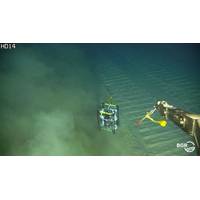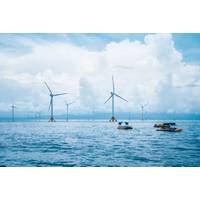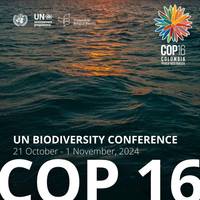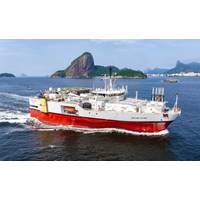
Deep-Sea Mining Test Caused Distant Sediment Change
Independent researchers from the MiningImpact project and the German Federal Institute for Geosciences and Natural Resources (BGR) monitored the test of an industrial pre-prototype nodule collector vehicle in the Clarion-Clipperton Zone in the eastern Pacific and found that the spread of the suspended sediment plumes could reach 4.5 kilometers (2.8 miles).The project is coordinated by the GEOMAR Helmholtz Centre for Ocean Research Kiel, has been investigating the potential environmental impacts of deep-sea mining since 2015. Previous analyses of decade-old disturbance traces in the Clarion-Clipperton

ASL to Work on Metocean Data for Offshore Wind Project in Atlantic Canada
ASL Environmental Sciences has secured research and development subcontract from Ireland-based Gavin & Doherty Geosolutions as part of a metocean data needs assessment for the development of offshore wind projects in Atlantic Canada for Natural Resources Canada.The primary objective of the work is to identify all types of metocean data needed to enable successful offshore wind project development in Atlantic Canada.Following a review of existing datasets, and a dataset gap analysis, ASL will be making recommendations for specific appropriate measures to collect necessary datasets. The analysis

COP16 Biodiversity Summit Gridlocked
.Currently about 38% of the world's tree species - totaling 16,425 species - are at risk of extinction thanks to timber logging and clear-cutting to make way for farming, mining, road-building and other development efforts, according to the International Union for Conservation of Nature and Natural Resources (IUCN)."We need to take urgent action ... if we really want to keep these tree (species) alive," IUCN Director Grethel Aguilar told a news briefing in Cali.The summit, which marks the 16th meeting of parties to the U.N. Convention on Biological Diversity (CBD), is debating how to
![“Our province has been shaped by the Atlantic Ocean. It can be extremely cold, extremely unforgiving. If it works here, it will work anywhere. The technology we [develop and] use here can be adapted to anywhere else in the world. We are adaptive, we're nimble, we're problem solvers. And at the end of the day, we are collaborative."
Minister Andrew Parsons, Industry, Energy & Technology, Newfoundland & Labrador, Canada. Photo courtesy the office of Minister Andrew Parsons](https://images.marinetechnologynews.com/images/maritime/w200h200padcanvas/province-been-shaped-153427.jpg)
NL Government Helps Power Regional Maritime, Offshore Energy, Subsea Tech Cluster
;is a member of the House of Assembly for a district called Burgeo-La Poile, but he’s also the Minister of Industry, Energy and Technology in the Government of Premier Dr. Andrew Furey.“When the Premier took over government in August of 2020, he combined the previous departments of natural resources with the economic development responsibilities of other departments, combining it all into one shop, but really also putting a focus on technology, putting that in the departmental name,” said Parsons in a recent interview with Marine Technology TV.Today his department handles all technology

Technology Time - Newfoundland & Labrador Style
which are typically derived from petroleum and quickly disposed of after one use. Being based in NL, cofounder and CTO Sanjay Dubey and cofounder and CEO Sarika Kumari explained, allows the company to draw inspiration from the region’s connection to the ocean. “The proximity to abundant natural resources, particularly seaweed, is a unique advantage,” they added. Additionally, as the global focus shifts towards minimizing environmental impact, it’s crucial for companies to explore and integrate sustainable solutions and practices.eDNAtec team members working in the lab.© eDNAteceDNAt

OPINION: Potable Water “on-the-cheap” in La Guajira, Colombia?
. The province is (about half of the size of New York) mainly populated by Colombia’s largest ethnic community, which includes nearly 300,000 members of the Wayúu ancestral tribe.For decades their survival has been at risk. Abandonment of the state, corruption, and the misuse of natural resources have impoverished the region. As a result, the Ministry of Housing here in Bogotá has confirmed that 96% of people living in rural La Guajira do not have reliable access to potable water. Global warming, El Niño, and climate change are all now especially in play.Fresh water on

Utility Serving San Juan Islands Proposes to Harness Tidal Power
process, OPALCO anticipates state and federal interagency engagement with the U.S. Army Corps of Engineers, the National Marine Fisheries Service, the U.S. Fish and Wildlife Service, the Washington Department of Fish and Wildlife, the Washington Department of Ecology, the Washington Department of Natural Resources and the Federal Energy Regulatory Commission.Once the necessary environmental studies have been completed, permitting the deployment of this system is expected to take approximately 24 months, according to OPALCO.Large-scale installationIn partnership with Orbital Marine Energy, OPALCO seeks

PGS Good to Go on Petrobras’ 4D Survey Offshore Brazil
Norwegian seismic firm PGS has obtained all permits for the start of the large Petrobras’ 4D survey over the Barracuda Caratinga fields, offshore Brazil.The Brazilian Institute of Environment and Renewable Natural Resources (IBAMA) has issued the final permit for the large 4D survey over the Barracuda Caratinga fields and the survey is about to start.PGS announced the 4D contract award in December 2022 and original project start-up was June/July last year.To optimize vessel resources during the 2023 summer season, the Ramform Victory was reactivated and earmarked for this project.The Ramform

All American Marine to Build Research Vessel for Cal Poly Humboldt
;s North Coast, and this was a key consideration when we chose them as our builder. Upon completion, this vessel will become the centerpiece of our academic fleet, supporting our marine research and teaching efforts for decades to come, ” said Eric Riggs, Dean, Cal Poly Humboldt College of Natural Resources & Sciences.The propulsion package includes 2x fixed pitch propellers powered by twin MAN D2862LE438 EPA Tier 4 engines, including a diesel particulate filter (DPF). These engines, rated at 1,182 bhp at 2,100 RPM, are designed to meet current, stringent California requirements. Onboard the

 February 2025
February 2025





